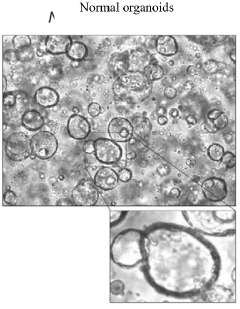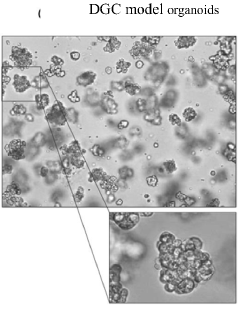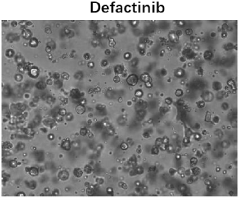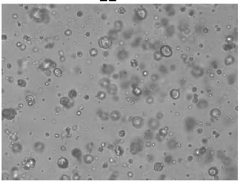Role of Tautomerization in Alkaloid Ecological Interactions
JUL 29, 20259 MIN READ
Generate Your Research Report Instantly with AI Agent
Patsnap Eureka helps you evaluate technical feasibility & market potential.
Alkaloid Tautomerization Background and Objectives
Alkaloids are a diverse class of naturally occurring organic compounds containing nitrogen atoms, primarily produced by plants as secondary metabolites. These compounds have played a significant role in the evolution of plant-animal interactions and have been the subject of extensive research due to their ecological importance and potential pharmaceutical applications.
Tautomerization, a fundamental concept in organic chemistry, refers to the structural isomerism where a compound exists in two or more forms that readily interconvert. This phenomenon is particularly relevant in the context of alkaloids, as many of these compounds can exist in multiple tautomeric forms, each potentially exhibiting distinct chemical and biological properties.
The study of alkaloid tautomerization in ecological interactions has gained increasing attention in recent years, as researchers have begun to recognize its potential impact on plant defense mechanisms, pollinator attraction, and overall ecosystem dynamics. Understanding the role of tautomerization in these interactions is crucial for developing a comprehensive view of alkaloid function in nature and for harnessing their potential in various applications.
The primary objective of this technical research report is to explore and elucidate the complex relationship between alkaloid tautomerization and ecological interactions. Specifically, we aim to investigate how the ability of alkaloids to exist in multiple tautomeric forms influences their biological activity, chemical reactivity, and overall ecological function within plant-animal systems.
To achieve this goal, we will examine the historical development of alkaloid research, focusing on key discoveries that have shaped our understanding of their tautomeric behavior. We will also review current knowledge regarding the mechanisms of tautomerization in different alkaloid classes and how these processes are influenced by environmental factors such as pH, temperature, and solvent conditions.
Furthermore, this report will assess the state-of-the-art analytical techniques used to study alkaloid tautomerization, including advanced spectroscopic methods and computational modeling approaches. By synthesizing information from various disciplines, including organic chemistry, biochemistry, ecology, and pharmacology, we aim to provide a comprehensive overview of the role of tautomerization in alkaloid ecological interactions.
Ultimately, this research seeks to identify potential areas for future investigation and innovation in the field of alkaloid chemistry and ecology. By understanding the intricate relationship between molecular structure, tautomeric equilibria, and biological function, we hope to pave the way for novel applications in areas such as drug discovery, pest management, and ecosystem conservation.
Tautomerization, a fundamental concept in organic chemistry, refers to the structural isomerism where a compound exists in two or more forms that readily interconvert. This phenomenon is particularly relevant in the context of alkaloids, as many of these compounds can exist in multiple tautomeric forms, each potentially exhibiting distinct chemical and biological properties.
The study of alkaloid tautomerization in ecological interactions has gained increasing attention in recent years, as researchers have begun to recognize its potential impact on plant defense mechanisms, pollinator attraction, and overall ecosystem dynamics. Understanding the role of tautomerization in these interactions is crucial for developing a comprehensive view of alkaloid function in nature and for harnessing their potential in various applications.
The primary objective of this technical research report is to explore and elucidate the complex relationship between alkaloid tautomerization and ecological interactions. Specifically, we aim to investigate how the ability of alkaloids to exist in multiple tautomeric forms influences their biological activity, chemical reactivity, and overall ecological function within plant-animal systems.
To achieve this goal, we will examine the historical development of alkaloid research, focusing on key discoveries that have shaped our understanding of their tautomeric behavior. We will also review current knowledge regarding the mechanisms of tautomerization in different alkaloid classes and how these processes are influenced by environmental factors such as pH, temperature, and solvent conditions.
Furthermore, this report will assess the state-of-the-art analytical techniques used to study alkaloid tautomerization, including advanced spectroscopic methods and computational modeling approaches. By synthesizing information from various disciplines, including organic chemistry, biochemistry, ecology, and pharmacology, we aim to provide a comprehensive overview of the role of tautomerization in alkaloid ecological interactions.
Ultimately, this research seeks to identify potential areas for future investigation and innovation in the field of alkaloid chemistry and ecology. By understanding the intricate relationship between molecular structure, tautomeric equilibria, and biological function, we hope to pave the way for novel applications in areas such as drug discovery, pest management, and ecosystem conservation.
Ecological Significance of Alkaloid Tautomers
Alkaloid tautomerization plays a crucial role in ecological interactions, significantly influencing the behavior, defense mechanisms, and overall survival strategies of various organisms. This phenomenon occurs when alkaloids, a diverse group of nitrogen-containing organic compounds, undergo structural changes that alter their chemical properties and biological activities. The ecological significance of alkaloid tautomers is multifaceted and extends across different levels of ecosystem dynamics.
In plant-herbivore interactions, alkaloid tautomerization serves as a sophisticated defense mechanism. Plants produce alkaloids that can exist in multiple tautomeric forms, each potentially exhibiting different levels of toxicity or deterrence against herbivores. This chemical flexibility allows plants to adapt their defense strategies in response to varying environmental pressures and herbivore attacks. The interconversion between tautomers can be triggered by factors such as pH changes, temperature fluctuations, or enzymatic activities, providing plants with a dynamic and responsive defense system.
The ecological impact of alkaloid tautomers extends to pollinator interactions as well. Some alkaloids in nectar or floral tissues can undergo tautomerization, affecting their taste, scent, or pharmacological properties. This can influence pollinator preferences and behaviors, potentially impacting plant reproductive success and pollination networks within ecosystems. The subtle changes in alkaloid structure due to tautomerization may also contribute to the specificity of plant-pollinator relationships, fostering coevolution and biodiversity.
In the soil ecosystem, alkaloid tautomerization influences plant-microbe interactions and nutrient cycling. Different tautomeric forms of alkaloids released into the soil through root exudation or plant decomposition can have varying effects on soil microbial communities. These interactions can modulate nutrient availability, affect symbiotic relationships between plants and microorganisms, and shape the overall soil health and ecosystem functioning.
Alkaloid tautomers also play a role in inter-species communication and competition. The ability of certain organisms to produce or metabolize specific tautomeric forms of alkaloids can provide competitive advantages in resource acquisition or territory defense. This chemical-based communication system contributes to the complex web of ecological relationships that define ecosystem structure and function.
Furthermore, the ecological significance of alkaloid tautomers extends to their impact on predator-prey dynamics. Some organisms have evolved the ability to sequester alkaloids from their diet and utilize tautomerization to modify these compounds for their own defense or as chemical signals. This adaptation can influence food web structures and energy flow within ecosystems, highlighting the far-reaching consequences of alkaloid tautomerization in ecological contexts.
In plant-herbivore interactions, alkaloid tautomerization serves as a sophisticated defense mechanism. Plants produce alkaloids that can exist in multiple tautomeric forms, each potentially exhibiting different levels of toxicity or deterrence against herbivores. This chemical flexibility allows plants to adapt their defense strategies in response to varying environmental pressures and herbivore attacks. The interconversion between tautomers can be triggered by factors such as pH changes, temperature fluctuations, or enzymatic activities, providing plants with a dynamic and responsive defense system.
The ecological impact of alkaloid tautomers extends to pollinator interactions as well. Some alkaloids in nectar or floral tissues can undergo tautomerization, affecting their taste, scent, or pharmacological properties. This can influence pollinator preferences and behaviors, potentially impacting plant reproductive success and pollination networks within ecosystems. The subtle changes in alkaloid structure due to tautomerization may also contribute to the specificity of plant-pollinator relationships, fostering coevolution and biodiversity.
In the soil ecosystem, alkaloid tautomerization influences plant-microbe interactions and nutrient cycling. Different tautomeric forms of alkaloids released into the soil through root exudation or plant decomposition can have varying effects on soil microbial communities. These interactions can modulate nutrient availability, affect symbiotic relationships between plants and microorganisms, and shape the overall soil health and ecosystem functioning.
Alkaloid tautomers also play a role in inter-species communication and competition. The ability of certain organisms to produce or metabolize specific tautomeric forms of alkaloids can provide competitive advantages in resource acquisition or territory defense. This chemical-based communication system contributes to the complex web of ecological relationships that define ecosystem structure and function.
Furthermore, the ecological significance of alkaloid tautomers extends to their impact on predator-prey dynamics. Some organisms have evolved the ability to sequester alkaloids from their diet and utilize tautomerization to modify these compounds for their own defense or as chemical signals. This adaptation can influence food web structures and energy flow within ecosystems, highlighting the far-reaching consequences of alkaloid tautomerization in ecological contexts.
Current Understanding and Challenges in Tautomerization Research
Tautomerization, a fundamental process in organic chemistry, plays a crucial role in the ecological interactions of alkaloids. Current research in this field has made significant strides, yet several challenges persist. The understanding of tautomerization in alkaloids has evolved from simple structural observations to complex molecular dynamics studies.
Recent advancements in spectroscopic techniques, particularly NMR and high-resolution mass spectrometry, have enabled researchers to detect and characterize tautomeric forms of alkaloids with unprecedented precision. These methods have revealed that many alkaloids exist as dynamic equilibria of multiple tautomers, rather than static structures. This insight has profound implications for understanding their biological activities and ecological roles.
Computational chemistry has emerged as a powerful tool in tautomerization research. Quantum mechanical calculations and molecular dynamics simulations now allow scientists to predict tautomeric equilibria and transition states with increasing accuracy. These computational approaches have been particularly valuable in studying alkaloids in complex biological environments, where experimental observations are often challenging.
Despite these advances, several challenges remain in tautomerization research. One significant hurdle is the difficulty in studying tautomerization processes in vivo. The dynamic nature of tautomerization and the complex cellular environment make it challenging to observe these processes directly in living organisms. This limitation hinders our understanding of how tautomerization affects the bioavailability and activity of alkaloids in ecological contexts.
Another challenge lies in the integration of tautomerization data into broader ecological models. While we can now characterize tautomeric behavior at the molecular level, translating this information into meaningful predictions about ecological interactions remains complex. Factors such as pH, temperature, and the presence of other biomolecules can significantly influence tautomeric equilibria, making it difficult to extrapolate laboratory findings to natural environments.
The role of tautomerization in alkaloid-protein interactions presents another frontier in current research. As many alkaloids exert their ecological effects through interactions with specific proteins, understanding how tautomerization affects these interactions is crucial. However, the dynamic nature of both tautomerization and protein conformations makes this a particularly challenging area of study.
Lastly, the field faces a methodological challenge in standardizing approaches to study and report tautomerization. The diversity of alkaloid structures and the variety of experimental and computational methods used make it difficult to compare results across different studies. Developing standardized protocols and reporting methods would greatly enhance the collective understanding of tautomerization in alkaloid ecological interactions.
Recent advancements in spectroscopic techniques, particularly NMR and high-resolution mass spectrometry, have enabled researchers to detect and characterize tautomeric forms of alkaloids with unprecedented precision. These methods have revealed that many alkaloids exist as dynamic equilibria of multiple tautomers, rather than static structures. This insight has profound implications for understanding their biological activities and ecological roles.
Computational chemistry has emerged as a powerful tool in tautomerization research. Quantum mechanical calculations and molecular dynamics simulations now allow scientists to predict tautomeric equilibria and transition states with increasing accuracy. These computational approaches have been particularly valuable in studying alkaloids in complex biological environments, where experimental observations are often challenging.
Despite these advances, several challenges remain in tautomerization research. One significant hurdle is the difficulty in studying tautomerization processes in vivo. The dynamic nature of tautomerization and the complex cellular environment make it challenging to observe these processes directly in living organisms. This limitation hinders our understanding of how tautomerization affects the bioavailability and activity of alkaloids in ecological contexts.
Another challenge lies in the integration of tautomerization data into broader ecological models. While we can now characterize tautomeric behavior at the molecular level, translating this information into meaningful predictions about ecological interactions remains complex. Factors such as pH, temperature, and the presence of other biomolecules can significantly influence tautomeric equilibria, making it difficult to extrapolate laboratory findings to natural environments.
The role of tautomerization in alkaloid-protein interactions presents another frontier in current research. As many alkaloids exert their ecological effects through interactions with specific proteins, understanding how tautomerization affects these interactions is crucial. However, the dynamic nature of both tautomerization and protein conformations makes this a particularly challenging area of study.
Lastly, the field faces a methodological challenge in standardizing approaches to study and report tautomerization. The diversity of alkaloid structures and the variety of experimental and computational methods used make it difficult to compare results across different studies. Developing standardized protocols and reporting methods would greatly enhance the collective understanding of tautomerization in alkaloid ecological interactions.
Analytical Methods for Studying Alkaloid Tautomers
01 Tautomerization of alkaloids in plant defense mechanisms
Alkaloid tautomerization plays a crucial role in plant defense mechanisms against herbivores and pathogens. This process can alter the chemical properties and biological activities of alkaloids, potentially enhancing their protective effects. The tautomeric forms of alkaloids may exhibit different levels of toxicity or deterrence to insects and microorganisms, contributing to the plant's overall ecological fitness.- Tautomerization of alkaloids in plant defense mechanisms: Alkaloid tautomerization plays a crucial role in plant defense against herbivores and pathogens. This process can alter the chemical properties and biological activities of alkaloids, potentially enhancing their toxicity or deterrent effects. The dynamic equilibrium between tautomeric forms can be influenced by environmental factors, affecting the plant's ecological interactions.
- Impact of alkaloid tautomerization on insect-plant interactions: The tautomerization of alkaloids can significantly influence insect-plant interactions. Different tautomeric forms may have varying effects on insect behavior, including feeding deterrence, oviposition, and attraction or repulsion of pollinators. This process can contribute to the co-evolution of plants and insects, shaping their ecological relationships.
- Alkaloid tautomerization in microbial interactions: Tautomerization of alkaloids can affect plant-microbe interactions in the rhizosphere and phyllosphere. Different tautomeric forms may exhibit varying antimicrobial properties, influencing the composition of microbial communities associated with plants. This process can impact nutrient cycling, plant growth promotion, and disease resistance in ecological systems.
- Environmental factors influencing alkaloid tautomerization: Various environmental factors, such as pH, temperature, and light exposure, can affect the tautomerization of alkaloids in plants. These factors can alter the equilibrium between tautomeric forms, potentially modifying the ecological functions of alkaloids in response to changing environmental conditions. This dynamic process contributes to the plasticity of plant chemical defenses.
- Alkaloid tautomerization in allelopathic interactions: Tautomerization of alkaloids can influence allelopathic interactions between plants. Different tautomeric forms may exhibit varying levels of phytotoxicity, affecting seed germination, plant growth, and competition in ecological communities. This process can contribute to the establishment and maintenance of plant populations in natural ecosystems.
02 Influence of environmental factors on alkaloid tautomerization
Environmental factors such as pH, temperature, and light exposure can significantly affect the tautomerization of alkaloids in plants. These factors may influence the equilibrium between different tautomeric forms, potentially altering the ecological interactions between plants and their environment. Understanding these influences is crucial for predicting plant responses to changing environmental conditions and their impact on ecosystem dynamics.Expand Specific Solutions03 Alkaloid tautomerization in plant-pollinator interactions
The tautomerization of alkaloids can affect plant-pollinator interactions by modifying the chemical signals perceived by pollinators. Different tautomeric forms may have varying levels of attractiveness or repellence to specific pollinators, influencing pollination success and plant reproduction. This process can contribute to the co-evolution of plants and their pollinators, shaping ecological relationships in natural ecosystems.Expand Specific Solutions04 Role of alkaloid tautomerization in allelopathy
Alkaloid tautomerization can play a significant role in allelopathic interactions between plants. The different tautomeric forms of alkaloids released into the environment may exhibit varying levels of inhibitory or stimulatory effects on neighboring plants. This process can influence plant community composition and competition for resources, contributing to the overall ecological balance in plant ecosystems.Expand Specific Solutions05 Tautomerization-induced changes in alkaloid bioavailability
The tautomerization of alkaloids can affect their bioavailability and uptake by organisms in the ecosystem. Different tautomeric forms may have varying solubility, membrane permeability, and stability, influencing their distribution and accumulation in soil, water, and living organisms. These changes can impact the broader ecological interactions within the ecosystem, including nutrient cycling and food web dynamics.Expand Specific Solutions
Key Research Groups in Alkaloid Ecology
The field of alkaloid ecological interactions is in a dynamic phase of development, with tautomerization playing a crucial role. The market size is expanding as researchers explore the implications for drug discovery and ecological understanding. Technologically, the area is maturing, with companies like Sunshine Lake Pharma Co., Ltd. and Galapagos NV leading in pharmaceutical applications. Academic institutions such as Harvard College and Tsinghua University are driving fundamental research. The involvement of diverse players, from biotech firms like Arrowhead Pharmaceuticals to research institutes like Dana-Farber Cancer Institute, indicates a growing recognition of the field's potential across multiple sectors.
President & Fellows of Harvard College
Technical Solution: Harvard College has developed advanced computational methods to study tautomerization in alkaloid ecological interactions. Their approach combines quantum mechanical calculations with machine learning algorithms to predict tautomeric equilibria and their effects on alkaloid-protein binding[1]. This method allows for the rapid screening of thousands of alkaloid structures and their potential ecological roles. The research team has also implemented molecular dynamics simulations to model the dynamic interconversion between tautomers in different biological environments, providing insights into how tautomerization influences alkaloid bioavailability and toxicity[2].
Strengths: Access to cutting-edge computational resources and interdisciplinary expertise. Weaknesses: May lack direct field testing capabilities for ecological interactions.
The Broad Institute, Inc.
Technical Solution: The Broad Institute has developed a high-throughput screening platform to investigate the role of tautomerization in alkaloid-target interactions. Their approach utilizes a combination of chemical proteomics and metabolomics to identify protein targets of alkaloids and their tautomers in various ecological contexts[3]. The institute has also pioneered the use of CRISPR-Cas9 genome editing to create model organisms with altered alkaloid biosynthesis pathways, allowing for the study of tautomerization effects on plant-herbivore and plant-pathogen interactions in vivo[4]. Additionally, they have implemented advanced imaging techniques to visualize the spatial distribution of alkaloid tautomers within plant tissues and insect bodies[5].
Strengths: Comprehensive, multi-omics approach and advanced genetic engineering capabilities. Weaknesses: May face challenges in translating laboratory findings to complex ecological systems.
Breakthrough Discoveries in Tautomer-Mediated Interactions
Pyrimidine or pyridine derivative and medicinal use thereof
PatentPendingAU2022411461A1
Innovation
- A compound is developed that acts as a dual inhibitor of focal adhesion kinase (FAK) and Yes-associated protein (YAP), offering therapeutic potential for cancer, pulmonary arterial hypertension, and pathological angiogenesis by modulating the Hippo-YAP pathway.
Polycarbonate polyol compositions and methods
PatentWO2010028362A1
Innovation
- A polymerization system comprising a metal complex with a permanent ligand set and a chain transfer agent having multiple initiation sites, along with a co-catalyst, to produce polycarbonate polyols with a high percentage of hydroxyl end groups and controlled molecular weight, achieving a carbonate-to-ether linkage ratio and polydispersity index suitable for specific applications.
Environmental Factors Influencing Tautomerization
Tautomerization in alkaloids plays a crucial role in their ecological interactions, and environmental factors significantly influence this process. Temperature is one of the primary environmental factors affecting tautomerization rates and equilibria. Higher temperatures generally accelerate tautomerization reactions, potentially altering the distribution of tautomeric forms in alkaloids. This temperature dependence can have profound implications for the ecological functions of alkaloids, as different tautomers may exhibit varying biological activities.
pH is another critical environmental factor influencing tautomerization in alkaloids. The acidity or basicity of the surrounding medium can shift tautomeric equilibria, favoring certain forms over others. In natural environments, soil pH and plant tissue pH can thus impact the tautomeric distribution of alkaloids, potentially affecting their interactions with other organisms, such as herbivores or pathogens.
Solvent polarity and hydrogen bonding capabilities also play significant roles in tautomerization processes. In aqueous environments, which are common in biological systems, the polar nature of water and its ability to form hydrogen bonds can stabilize certain tautomeric forms. Conversely, in less polar environments, such as lipid membranes, different tautomeric forms may be favored, potentially altering the alkaloids' biological activities and ecological roles.
Light exposure is another environmental factor that can influence tautomerization in some alkaloids. Photochemical reactions may induce tautomeric shifts, potentially leading to the formation of new compounds with distinct ecological functions. This light-dependent tautomerization can be particularly relevant for alkaloids present in plant leaves or other photosynthetic tissues exposed to sunlight.
Pressure, although less commonly considered, can also affect tautomerization equilibria. In certain ecological contexts, such as deep-sea environments or underground root systems, pressure variations may influence the distribution of tautomeric forms in alkaloids, potentially impacting their interactions with other organisms in these unique habitats.
The presence of metal ions in the environment can also modulate tautomerization processes in alkaloids. Many alkaloids can form complexes with metal ions, which can stabilize certain tautomeric forms or catalyze tautomerization reactions. This metal-dependent tautomerization can be particularly relevant in soil environments rich in various metal ions, potentially influencing the ecological roles of alkaloids in plant-soil interactions.
Understanding these environmental factors and their effects on alkaloid tautomerization is crucial for elucidating the complex ecological interactions mediated by these compounds. By considering these factors, researchers can better predict and interpret the behavior of alkaloids in diverse ecological contexts, leading to improved understanding of plant-environment interactions and potentially informing the development of novel ecological management strategies or biomimetic applications.
pH is another critical environmental factor influencing tautomerization in alkaloids. The acidity or basicity of the surrounding medium can shift tautomeric equilibria, favoring certain forms over others. In natural environments, soil pH and plant tissue pH can thus impact the tautomeric distribution of alkaloids, potentially affecting their interactions with other organisms, such as herbivores or pathogens.
Solvent polarity and hydrogen bonding capabilities also play significant roles in tautomerization processes. In aqueous environments, which are common in biological systems, the polar nature of water and its ability to form hydrogen bonds can stabilize certain tautomeric forms. Conversely, in less polar environments, such as lipid membranes, different tautomeric forms may be favored, potentially altering the alkaloids' biological activities and ecological roles.
Light exposure is another environmental factor that can influence tautomerization in some alkaloids. Photochemical reactions may induce tautomeric shifts, potentially leading to the formation of new compounds with distinct ecological functions. This light-dependent tautomerization can be particularly relevant for alkaloids present in plant leaves or other photosynthetic tissues exposed to sunlight.
Pressure, although less commonly considered, can also affect tautomerization equilibria. In certain ecological contexts, such as deep-sea environments or underground root systems, pressure variations may influence the distribution of tautomeric forms in alkaloids, potentially impacting their interactions with other organisms in these unique habitats.
The presence of metal ions in the environment can also modulate tautomerization processes in alkaloids. Many alkaloids can form complexes with metal ions, which can stabilize certain tautomeric forms or catalyze tautomerization reactions. This metal-dependent tautomerization can be particularly relevant in soil environments rich in various metal ions, potentially influencing the ecological roles of alkaloids in plant-soil interactions.
Understanding these environmental factors and their effects on alkaloid tautomerization is crucial for elucidating the complex ecological interactions mediated by these compounds. By considering these factors, researchers can better predict and interpret the behavior of alkaloids in diverse ecological contexts, leading to improved understanding of plant-environment interactions and potentially informing the development of novel ecological management strategies or biomimetic applications.
Biosynthetic Pathways of Tautomeric Alkaloids
The biosynthetic pathways of tautomeric alkaloids represent a complex and fascinating area of plant biochemistry. These pathways involve a series of enzymatic reactions that lead to the production of alkaloids capable of existing in multiple tautomeric forms. The process typically begins with the synthesis of primary metabolites, such as amino acids, which serve as precursors for alkaloid production.
One of the key steps in these pathways is the formation of a Schiff base, which involves the condensation of an amine with a carbonyl compound. This reaction is often catalyzed by enzymes known as aldolases or transaminases. The resulting imine intermediate is susceptible to tautomerization, a process that plays a crucial role in the diversity of alkaloid structures.
Subsequent steps in the biosynthetic pathway may include various modifications such as oxidation, reduction, methylation, and cyclization reactions. These transformations are catalyzed by a range of enzymes, including cytochrome P450 monooxygenases, reductases, methyltransferases, and cyclases. The specific sequence and nature of these reactions determine the final structure of the tautomeric alkaloid.
The biosynthesis of tautomeric alkaloids often involves compartmentalization within plant cells. Different stages of the pathway may occur in distinct cellular compartments, such as the cytosol, endoplasmic reticulum, or vacuoles. This spatial organization allows for the regulation of biosynthetic steps and the sequestration of potentially toxic intermediates.
Regulation of these biosynthetic pathways is tightly controlled at multiple levels, including transcriptional, post-transcriptional, and post-translational mechanisms. Environmental factors, such as light, temperature, and biotic stress, can significantly influence the expression of genes involved in alkaloid biosynthesis, leading to variations in alkaloid production and tautomeric ratios.
Recent advances in genomics and metabolomics have greatly enhanced our understanding of tautomeric alkaloid biosynthesis. The identification of key genes and enzymes involved in these pathways has paved the way for metabolic engineering approaches aimed at optimizing alkaloid production or creating novel compounds with enhanced bioactivities.
One of the key steps in these pathways is the formation of a Schiff base, which involves the condensation of an amine with a carbonyl compound. This reaction is often catalyzed by enzymes known as aldolases or transaminases. The resulting imine intermediate is susceptible to tautomerization, a process that plays a crucial role in the diversity of alkaloid structures.
Subsequent steps in the biosynthetic pathway may include various modifications such as oxidation, reduction, methylation, and cyclization reactions. These transformations are catalyzed by a range of enzymes, including cytochrome P450 monooxygenases, reductases, methyltransferases, and cyclases. The specific sequence and nature of these reactions determine the final structure of the tautomeric alkaloid.
The biosynthesis of tautomeric alkaloids often involves compartmentalization within plant cells. Different stages of the pathway may occur in distinct cellular compartments, such as the cytosol, endoplasmic reticulum, or vacuoles. This spatial organization allows for the regulation of biosynthetic steps and the sequestration of potentially toxic intermediates.
Regulation of these biosynthetic pathways is tightly controlled at multiple levels, including transcriptional, post-transcriptional, and post-translational mechanisms. Environmental factors, such as light, temperature, and biotic stress, can significantly influence the expression of genes involved in alkaloid biosynthesis, leading to variations in alkaloid production and tautomeric ratios.
Recent advances in genomics and metabolomics have greatly enhanced our understanding of tautomeric alkaloid biosynthesis. The identification of key genes and enzymes involved in these pathways has paved the way for metabolic engineering approaches aimed at optimizing alkaloid production or creating novel compounds with enhanced bioactivities.
Unlock deeper insights with Patsnap Eureka Quick Research — get a full tech report to explore trends and direct your research. Try now!
Generate Your Research Report Instantly with AI Agent
Supercharge your innovation with Patsnap Eureka AI Agent Platform!







